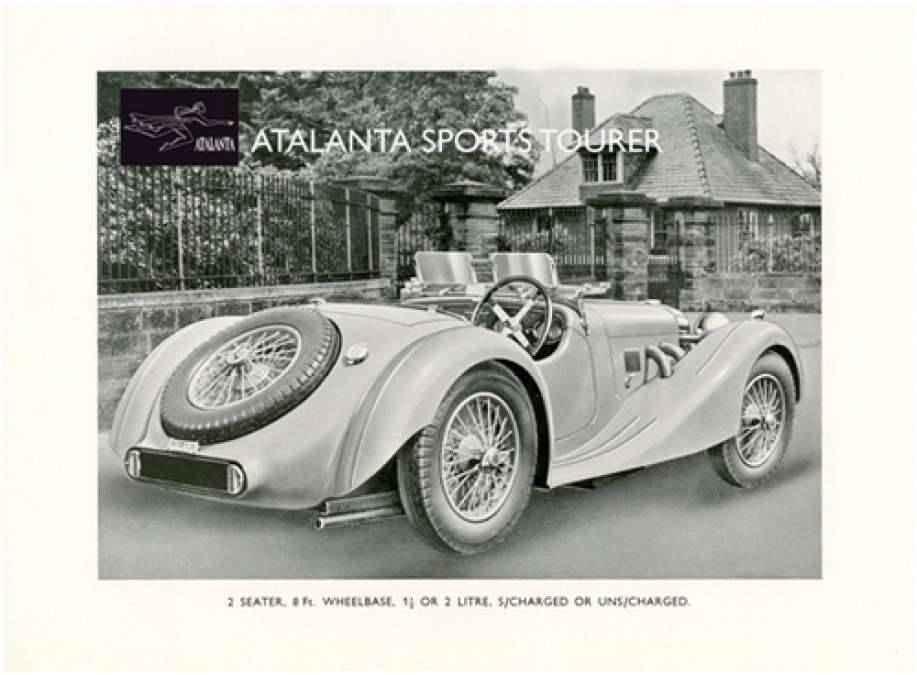The man leading the charge for Atalanta's comeback is Martyn Corfield, who is CEO of the new Atalanta Motors. Since first acquiring an Atalanta Works Le Mans car in 2009, Corfield has become obsessed with gaining and acquiring considerable knowledge about this British automaker. Several other Atalanta cars along the way several have led to him to become even more passionate about successfully reviving the brand.
“Atalanta is one of the greatest untold British Motoring heritage stories. The cars and the team that delivered the original concept were so ahead of their time. What might have been had the war not interrupted development?” said Corfield.
“As custodian of the Atalanta marque it is my objective to sensitively bring the original Atalanta design up to date, delivering modern motoring needs of safety, reliability, and performance, but still remaining true in spirit to the Atalanta sports car ideals and delivering the quality of product that this marque deserves.”
Corfield is no stranger to challenging projects. He recreated a 1954 Austin Healey for a record attempt. Not content with simply overseeing a car restoration with a immense attention to detail, Corfield delivered 17 International and National speed distance records including the current ‘fastest 100 miles’ UK record for any type of car, irrespective of age or class. He was set on breaking the record using only technology that was available in the 1950’s.
Corfield intends to bring this same level of energy, focus and attention to detail to reviving Atalanta Motors. Coupled with his entrepreneurial ambition and drawing upon his wider project management and manufacturing expertise, it seems the new venture should be successful.
The company is currently based in Staffordshire, UK which is not far away from where the original Atalanta prototype was built. Employing the latest CAD technology, the original 1938 Atalanta Le Mans has been used as a reference point for developing the new prototype. The new car will retain the charm and good looks of an original, but also satisfies the demands of modern roadways, taking advantage of new materials and technology.
This pre-production prototype is scheduled to be unveiled Spring 2012, 75 years after the first Atalanta car was announced. The new car will remain true to the original Atalanta design principles of ‘Innovation, Style and Performance.’
Atalanta Motors History
Atalanta Motors was established in December 1936 and based in Staines Middlesex. The company designed and produced exciting and innovative sports cars for just over two years. Unfortunately the outbreak of World War II halted production. Only 21 cars were made in that two year period.
However these 21 cars were ahead of their time. They included innovative features such as: fully independent coil spring suspension, adjustable damping front and rear, full hydraulic brakes, electrically operated magnetic epicyclic gearbox (an early semi-automatic), multi valve, twin-spark cylinder head, and selective engagement of superchargers. In addition, the bodies used lightweight materials such as electron, duralumin and hiduminium for many of its castings.
At first Atalanta cars were only offered with Albert Gough's underdeveloped 1½-liter 78 bhp and 2-liter 98 bhp engines that had been trialled previously in some Fraser Nash cars. A supercharged option was also available. In 1938 a more reliable and refined 4.3 liter V-12 Lincoln Zephyr engine producing 112 bhp was introduced.
Atalanta cars were available in a variety of configurations, each tailored to the needs and tastes of each customer.
You could order an Atalanta as a:
*Open 2-seat sports car
*2-seat sports tourer (as illustrated)
*2-door fixed head coupe and saloon
*2-door drop head coupe
All Atalanta models benefited from a lightweight construction that contributed to delivering excellent performance and coupled with amazing handling. In a 1939 road test a reviewer commented, “Colonial sections can be treated like main roads. The Atalanta has the tenacious quality of a racing car when cornering, and it is nearly impossible to cause the tires to squeal” The cars had great traction and high levels of grip for the day. These features undoubtedly contributed to Atalanta winning the team prize in the 1939 Welsh Rally.
Please contact Adam Yamada-Hanff – [email protected] – for comments, questions, or topics. You can also follow him on Twitter @AdamsAutoAdvice





